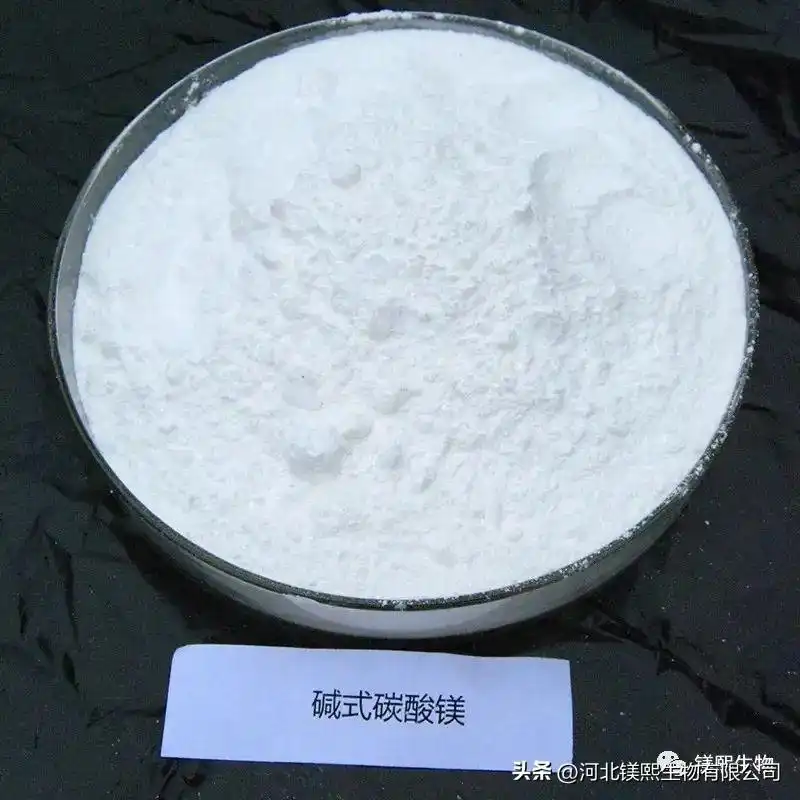Hydrated basic magnesium carbonate, also known as light magnesium carbonate, is a white crystal or powder, loose in texture, stable in the air, and slightly different in chemical composition due to different preparation methods and conditions. Its relative density is small, and it can be used as rubber, Additives for plastic products, also have the characteristics of non-combustible, can be used as fireproof insulation materials and flame retardants, and are also widely used in medicine and health, daily chemicals, fine chemical products and other fields. After thermal decomposition, it can be used to prepare magnesium oxide, and food-grade basic magnesium carbonate can be used as a flour improver. At present, basic magnesium carbonate is mainly used as an intermediate raw material for the preparation of high-purity magnesium oxide.
Preparation of Basic Magnesium Carbonate
For the precipitation and crystallization process that produces insoluble substances, it is generally believed that there is a nucleation induction period in the reaction, and the nucleation induction (tind) refers to the time interval from the establishment of a supersaturated solution of the target product to the formation of a critical crystal nucleus. A variety of methods were used to determine the nucleation induction period of the target product, including solution conductivity method and laser detection method. The solution conductivity method is widely used because of its convenient operation and high stability.

Using heavy magnesium water (Mg2+ concentration of 0.271mol/L) as raw material, the relationship between reaction temperature and induction period of heavy magnesium water was determined by solution conductivity method, and the precipitation and crystallization process of magnesium carbonate and the formation mechanism of basic magnesium carbonate were preliminarily explored.
in conclusion:
Using heavy magnesium water as the experimental raw material, changing the reaction temperature and pressure to improve the thermal decomposition efficiency of heavy magnesium aqueous solution. Basic magnesium carbonate with different shapes is prepared, and the products comply with HG/T2959-2010. get conclusion:
1) At 70°C, 0.10MPa, and 0.5h of reaction, the decomposition rate of heavy magnesium water is 66.4%, while at 70°C, 0.03MPa, and 0.5h of reaction, the decomposition rate of heavy magnesium water reaches 91.2%. At the same reaction temperature, the reaction pressure was lowered, the water decomposition rate of heavy magnesium increased, and the reaction induction period decreased; at 0.10MPa, the specific surface area first increased and then decreased with the increase of temperature; at 0.03MPa, with the increase of temperature, the ratio The surface area is reduced. The shape of the product changes with the increase of temperature as follows: rod-like particles-flaky particles-flower spherical crystals.
2) With the increase of the pyrolysis reaction temperature, the number of crystal water contained in the product molecule gradually decreases. The final product is: 4MgCO3 Mg(OH)2 4H2O. Its thermal decomposition first removes crystal water and generates intermediate product 4MgCO3 Mg(OH)2; then continues to decompose to generate CO2 and structural water, with a total mass loss of 56.81%. The final remaining product is MgO.
